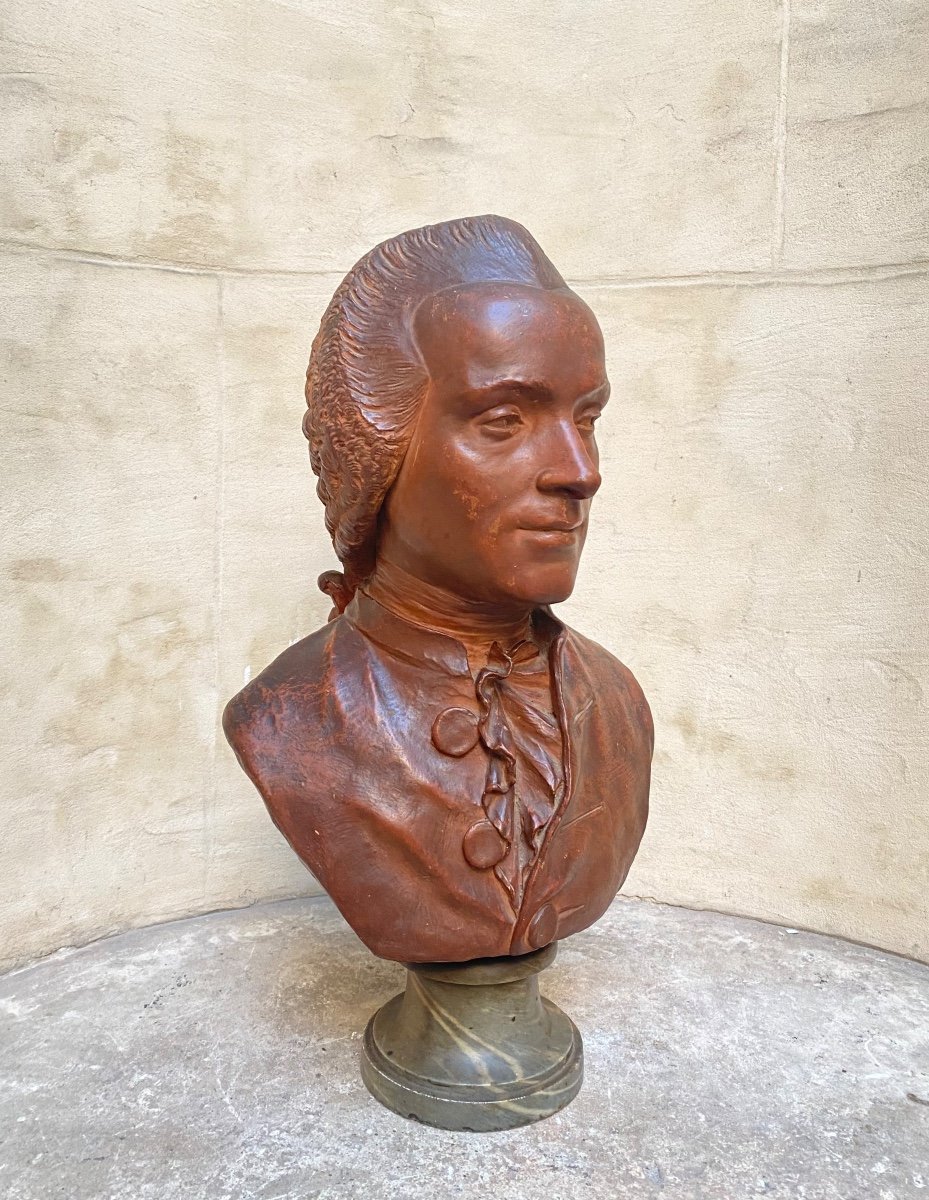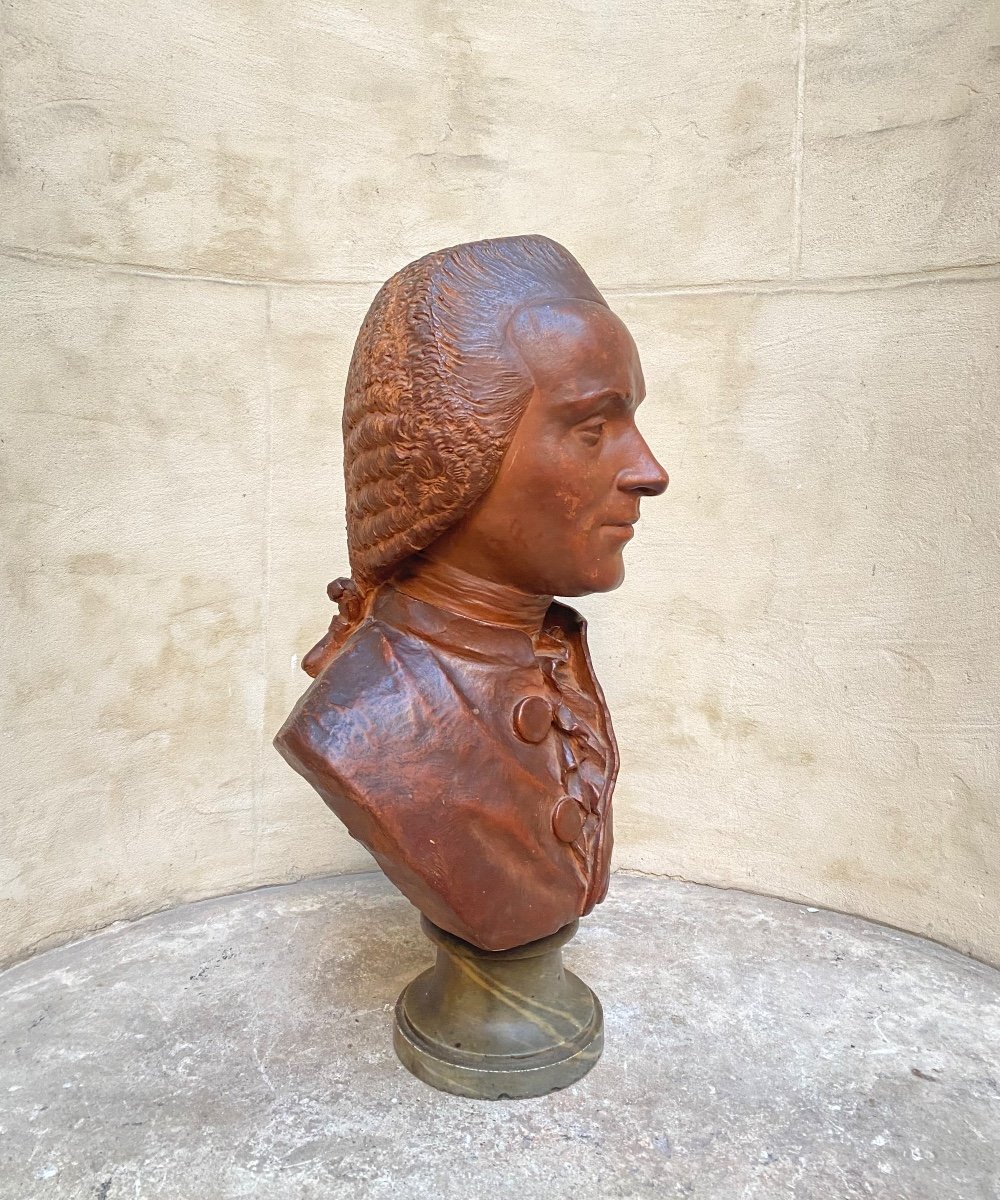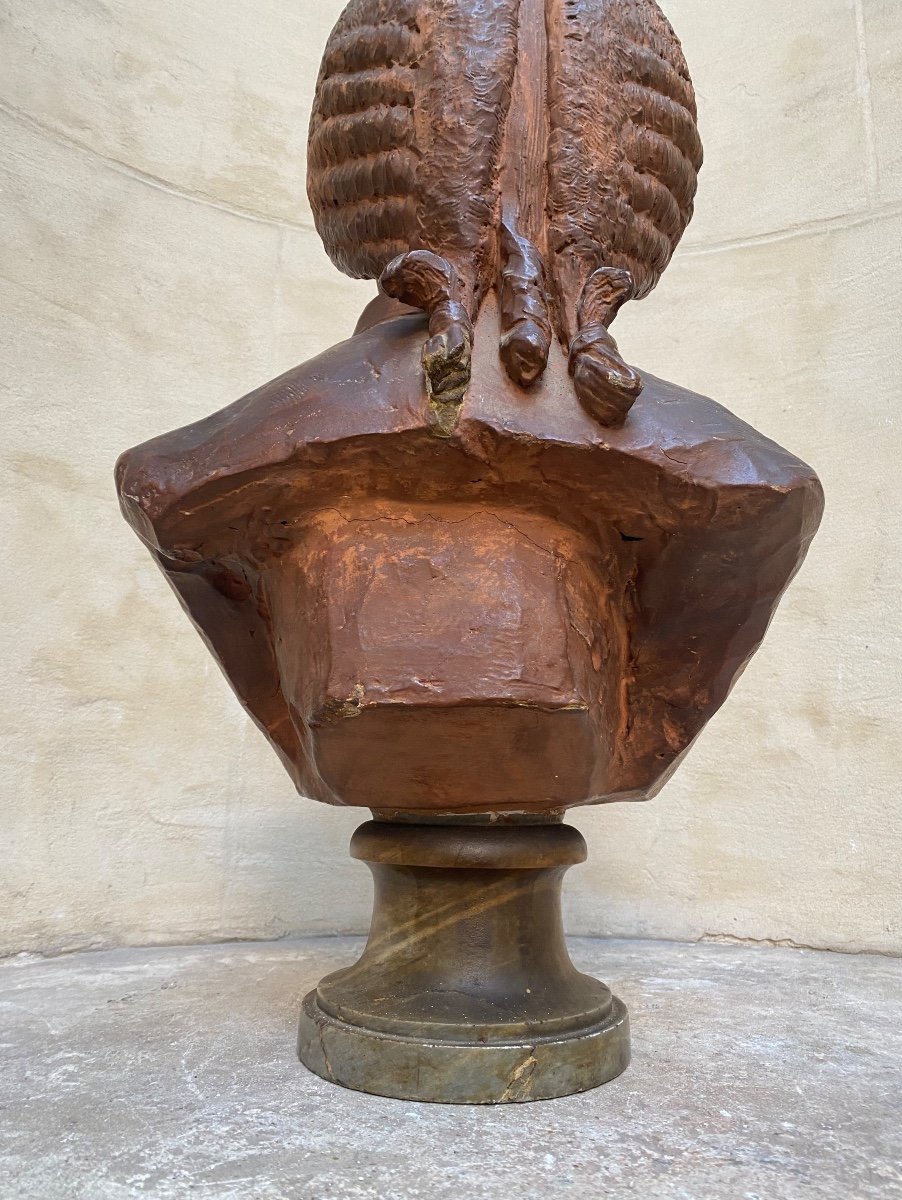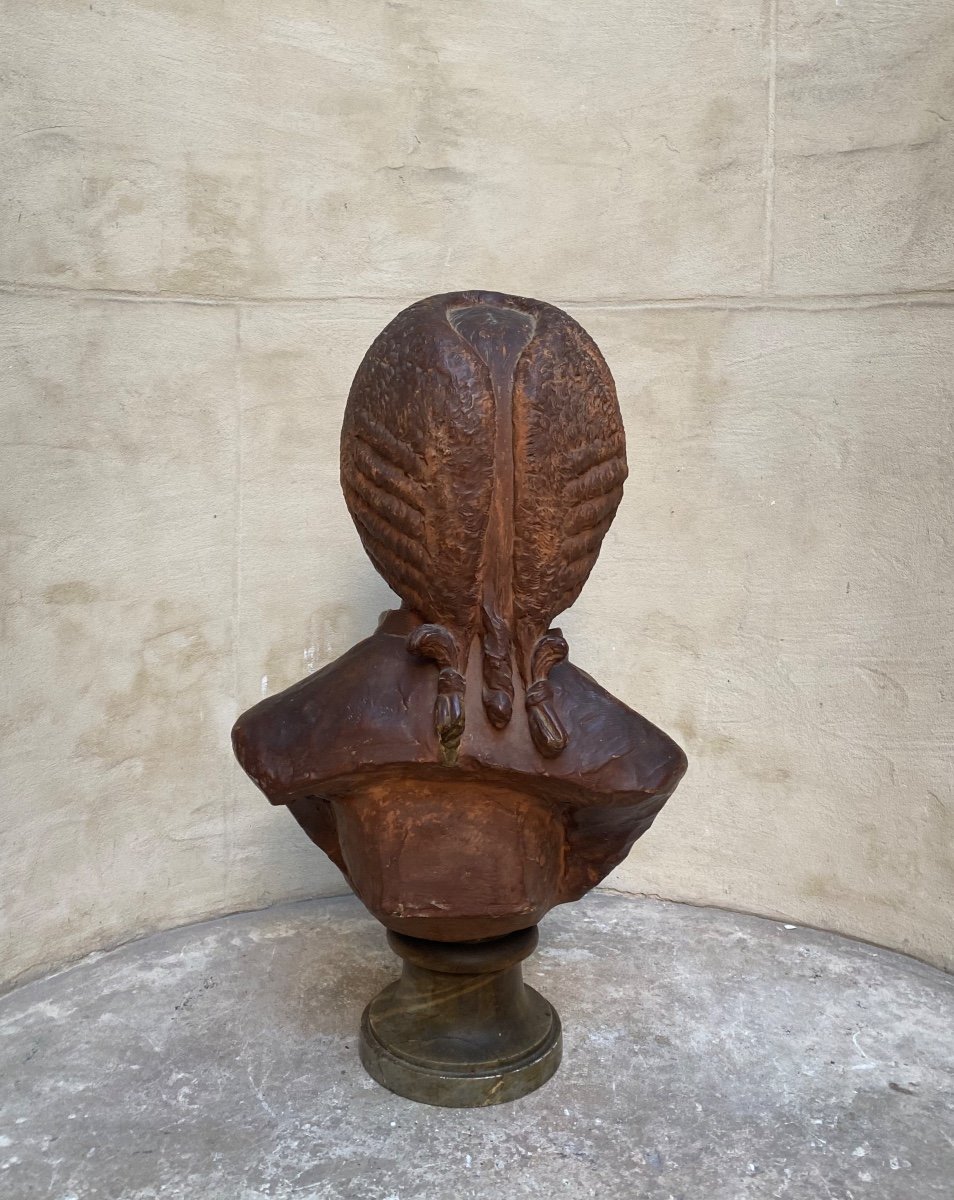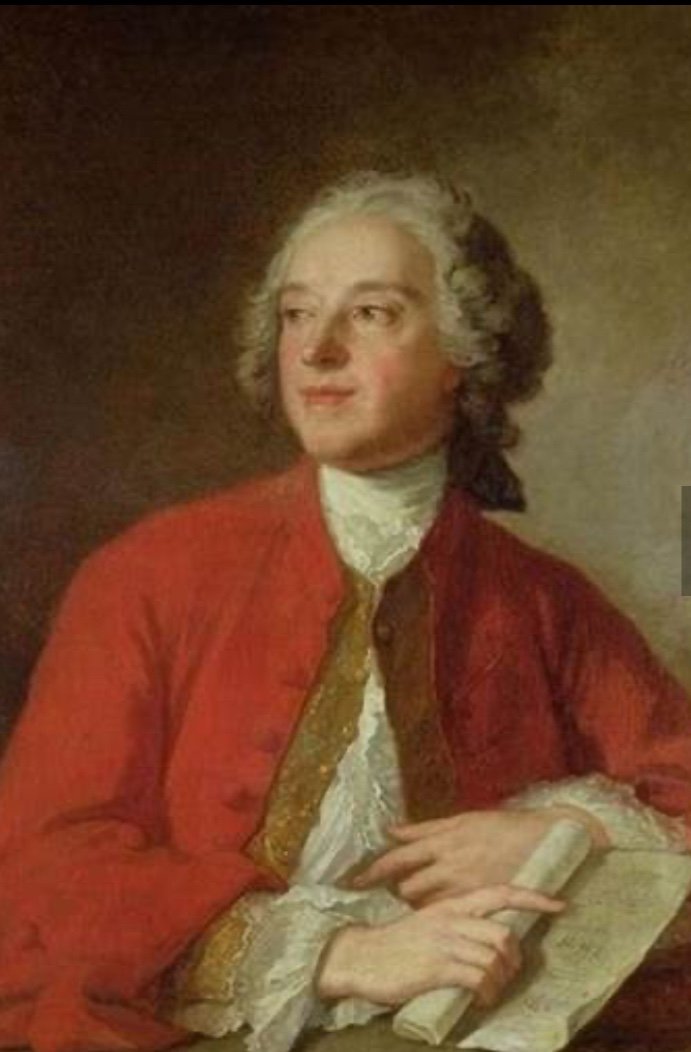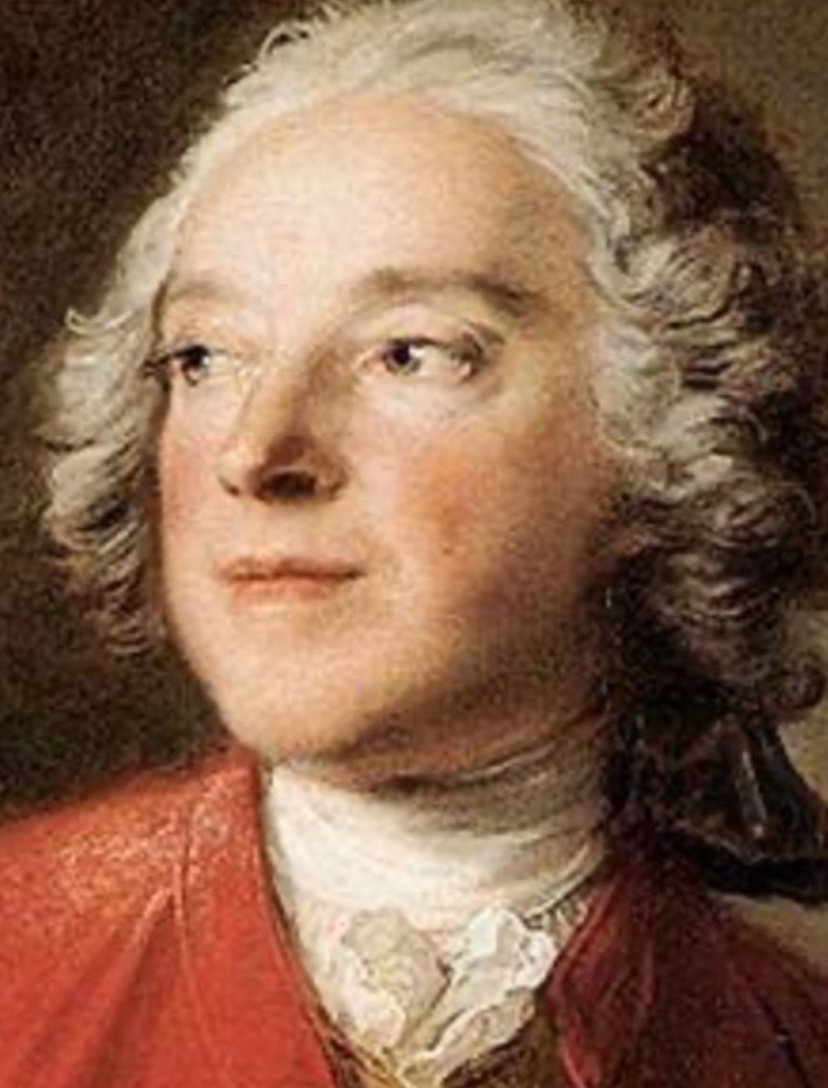"Bust Of Caron De Beaumarchais In Terracotta, (presumed Bust)"
Presumed bust of young Pierre-Augustin Caron de Beaumarchais, terracotta and marble pedestal.This bust from the end of the 18th century or beginning of the 19th century bears many resemblances to Beaumarchais: the eyes, the chin, the forehead, the nose and the almost smirking witty smile that we find in all the portraits of the writer.
The anachronism of the wig with the youth of the model suggests that the bust was made after the death of Beaumarchais (in 1799).
Very good condition, small loss on the back.
French writer, playwright, and musician, Pierre-Augustin Caron de Beaumarchais is an important figure of the Age of Enlightenment. He is the author of The Barber of Seville and The Marriage of Figaro. Pierre-Augustin Caron (who later took the name Beaumarchais) was born in Paris on January 24, 1732. The only boy among his siblings, he grew up in a wealthy family. Son of Louise Pichon and André-Charles Caron, watchmaker and creator of the skeleton watch, the young Pierre-Augustin learned the trade alongside his father. In 1753, at age 21, Pierre-Augustin, now a competent watchmaker, faced his first controversy. He must appeal to the Academy of Sciences to obtain official authorship of his invention, which the king's watchmaker attributes to himself. He abandoned watchmaking and married Madeleine-Catherine Aubertin in 1756. The following year, he adopted the name Pierre-Augustin Caron de Beaumarchais, to give himself an air of nobility, in reference to the lands owned by his rich wife. Beaumarchais' wife died suddenly in 1757, at age 35. This sudden disappearance plunges Pierre-Augustin into the heart of the long series of scandals that will punctuate his life.
Beaumarchais joined the world of finance thanks to his meeting with Joseph Pâris-Duverney. He quickly made his fortune there, and bought a position as secretary to the king, thus formalizing his title of nobility. In 1759, he taught the harp to the daughters of Louis XV. Beaumarchais then began to try his hand at theater: he wrote playlets, performed at the Château d'Étiolles. In 1768, he remarried Madame Levêque, a wealthy widow. During this period, Beaumarchais tried his hand at drama with the plays Eugénie, then Les Deux Amis or le négociant de Lyon, which did not attract the attention of the public. His wife died in 1770 at age 39, making Beaumarchais his heir. Accused of embezzlement of inheritance, he entered into trial with the Count de la Blanche following the succession of Pâris-Duverney, and was then dragged into the Goëzmann affair. During the Goëzmann affair, Pierre-Augustin Caron de Beaumarchais, on the verge of ruin, tried everything for everything. He wrote a series of factums, which had the desired effect: he succeeded in turning public opinion around, and saved what could be saved, at the cost of his fortune, his titles and his allies. It was following this difficult period that Beaumarchais became a spy for the king, hoping to regain the favor of the Court. In line with his factums, Beaumarchais wrote The Barber of Seville. First offered to actors at the Théâtre des Italians in 1772, who refused to perform the play, this prose comedy was severely censored in France. Beaumarchais' growing success, thanks to his legal memoirs, allowed him to perform the play, which had been revised in the meantime. The first performance took place on February 23, 1775, played by the Théâtre-Français. Too long, the play struggles to convince the public. Beaumarchais then made cuts, he reduced the play to four acts, pruned it, and in forty-eight hours, gave it a rhythm and liveliness that it lacked. A satire of the nobility, The Barber of Seville enjoyed triumphant success during the second performance, on February 26. Beaumarchais brings a sequel to his work with The Marriage of Figaro, a play written in 1778, also subject to censorship. It was not brought to the stage until 1784. A universal masterpiece, which has since become a classic of French theater, the play with its frenzied rhythm is an immense success. Beaumarchais inserts a critique of French society and in particular of class inequality, with caustic comedy. A flamboyant representative of bourgeois drama, The Marriage of Figaro, loathed by Louis XVI, is one of the harbingers of the French Revolution. Beaumarchais concluded this trilogy with a third, more tearful play, The Guilty Mother, in 1792. Through his theater, the glory of popular freedoms comes to light, in a world where the aristocracy is upset by contact with philosophical ideas. Instigator of the adoption of copyright, Beaumarchais was imprisoned in the Abbey prison during The Terror. Going into exile in Hamburg, he returned to France in 1796. At the end of his life, Pierre-Augustin Caron de Beaumarchais wrote his Memoirs, a masterpiece of pamphlets, and died of apoplexy in Paris on May 18, 1799. at the age of 67. He is buried in the Père-Lachaise cemetery.



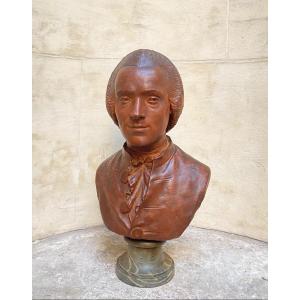


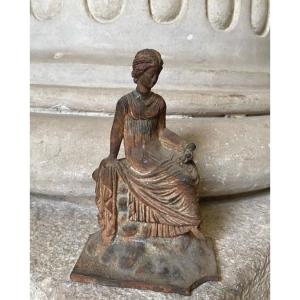

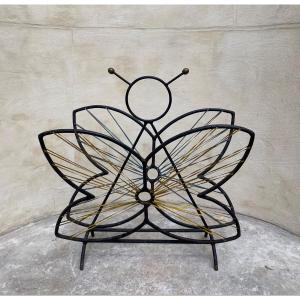
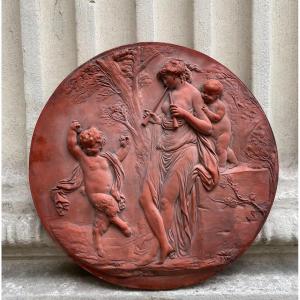


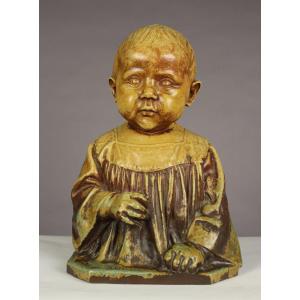
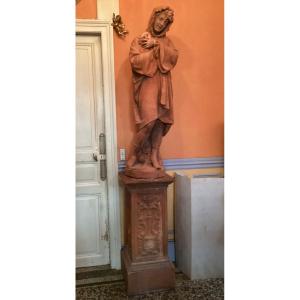
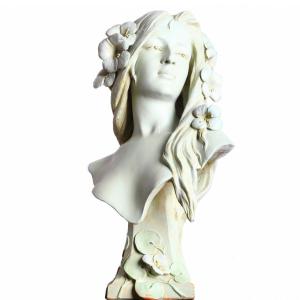
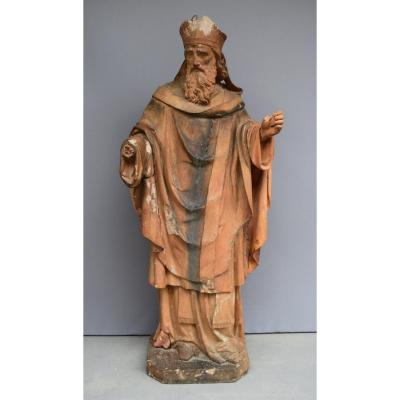




 Le Magazine
Le Magazine Rivista Artiquariato
Rivista Artiquariato TRÉSORS magazine
TRÉSORS magazine


